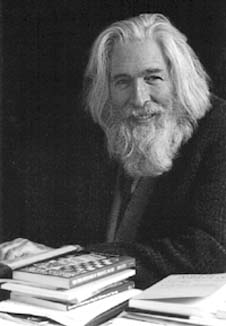Remembering Raymond: An Obituary of Raymond Smullyan

His looks would remind you of the wizard from Harry Potter movies. His nimble fingers can play effortlessly, Mozart and Chopin, on the piano. He can wave his empty hands and pull out a pigeon from nowhere. All this would have happened till 6 February 2017. That was when Raymond Smullyan, the amazing mathematician and logician, died.
Raymond Merrill Smullyan (aka Raymond Smullyan), was born on May 25, 1919, in Far Rockaway, N.Y., the son of Isidore Smullyan and Rosina Freeman Smullyan. He was educated at the University of Chicago and Princeton University. He was a mathematician and logician, professor emeritus of philosophy at Lehman College and the Graduate Center, City University of New York, and Oscar Ewing professor of philosophy at Indiana University Bloomington. He was one of many logicians to have studied under Alonzo Church. As an academic, he was known for his work in math and logic. He was also an author of a series of popular books on recreational logic, including, “What is the name of this book?” and “The lady and the tiger”. A review of his book “Satan, Cantor and Infinity: Mind-Boggling Puzzles” appeared sometime ago in this website.
Smullyan’s life itself was closely influenced by logic. Here are two instances:
The following story (published earlier in this website) was narrated by Smullyan himself in a video presentation:
When Smullyan, the master of puzzles, met his date, he challenged her to a logical puzzle.
The contract: Smullyan was to make a statement.
If the statement were true, the date had to give Smullyan an autograph.
If the statement were not true (i.e. it is false), the date should not give Smullyan the autograph
The innocent date did not see a trap, and agreed to the contract.
Now, the statement Smullyan made was:
You will give me neither an autograph nor a kiss.
If this is a true statement, the date would give Smullyan neither an autograph nor a kiss. This would contradict the contract made earlier (a true statement must get an autograph). On the other hand, if the statement was not true, it had to be false. In which case, the date would give either a kiss or an autograph. By contract, the date could not give her autograph for a false statement, and had to give Smullyan a kiss. Smullyan built up a “double or quit” game based on this puzzle and collected all the kisses he needed, till the point where the date had to quit by agreeing to marry Smullyan.
Here is another paradoxical incident, which Smullyan recalls:
On 1 April 1925, I was sick in bed … In the morning my brother Emile (ten years my senior) came into my bedroom and said: “Well, Raymond, today is April Fool’s Day, and I will fool you as you have never been fooled before~!” I waited all day for him to fool me, but he didn’t.
Emile had fooled him by not fooling him! Smullyan writes: “I recall lying in bed long after the lights were turned out wondering whether or not I had really been fooled.”
Our world has lost a gifted pianist, amateur astronomer, magician, punster and storyteller extraordinaire, and above all, a great mathematician and teacher.
Featured Image Courtesy: MacTutor History of Mathematics Archive.